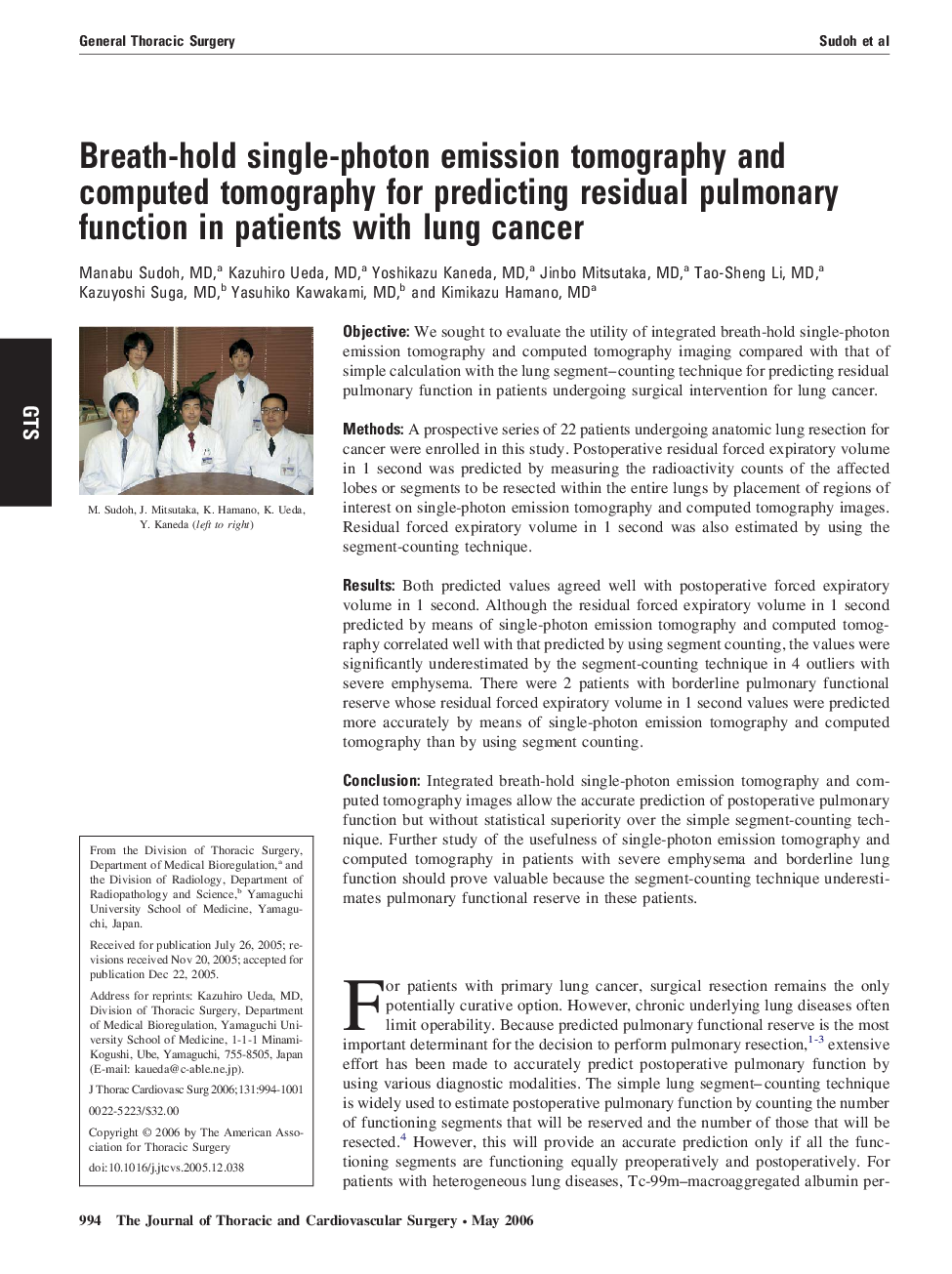| Article ID | Journal | Published Year | Pages | File Type |
|---|---|---|---|---|
| 2987025 | The Journal of Thoracic and Cardiovascular Surgery | 2006 | 8 Pages |
ObjectiveWe sought to evaluate the utility of integrated breath-hold single-photon emission tomography and computed tomography imaging compared with that of simple calculation with the lung segment–counting technique for predicting residual pulmonary function in patients undergoing surgical intervention for lung cancer.MethodsA prospective series of 22 patients undergoing anatomic lung resection for cancer were enrolled in this study. Postoperative residual forced expiratory volume in 1 second was predicted by measuring the radioactivity counts of the affected lobes or segments to be resected within the entire lungs by placement of regions of interest on single-photon emission tomography and computed tomography images. Residual forced expiratory volume in 1 second was also estimated by using the segment-counting technique.ResultsBoth predicted values agreed well with postoperative forced expiratory volume in 1 second. Although the residual forced expiratory volume in 1 second predicted by means of single-photon emission tomography and computed tomography correlated well with that predicted by using segment counting, the values were significantly underestimated by the segment-counting technique in 4 outliers with severe emphysema. There were 2 patients with borderline pulmonary functional reserve whose residual forced expiratory volume in 1 second values were predicted more accurately by means of single-photon emission tomography and computed tomography than by using segment counting.ConclusionIntegrated breath-hold single-photon emission tomography and computed tomography images allow the accurate prediction of postoperative pulmonary function but without statistical superiority over the simple segment-counting technique. Further study of the usefulness of single-photon emission tomography and computed tomography in patients with severe emphysema and borderline lung function should prove valuable because the segment-counting technique underestimates pulmonary functional reserve in these patients.
